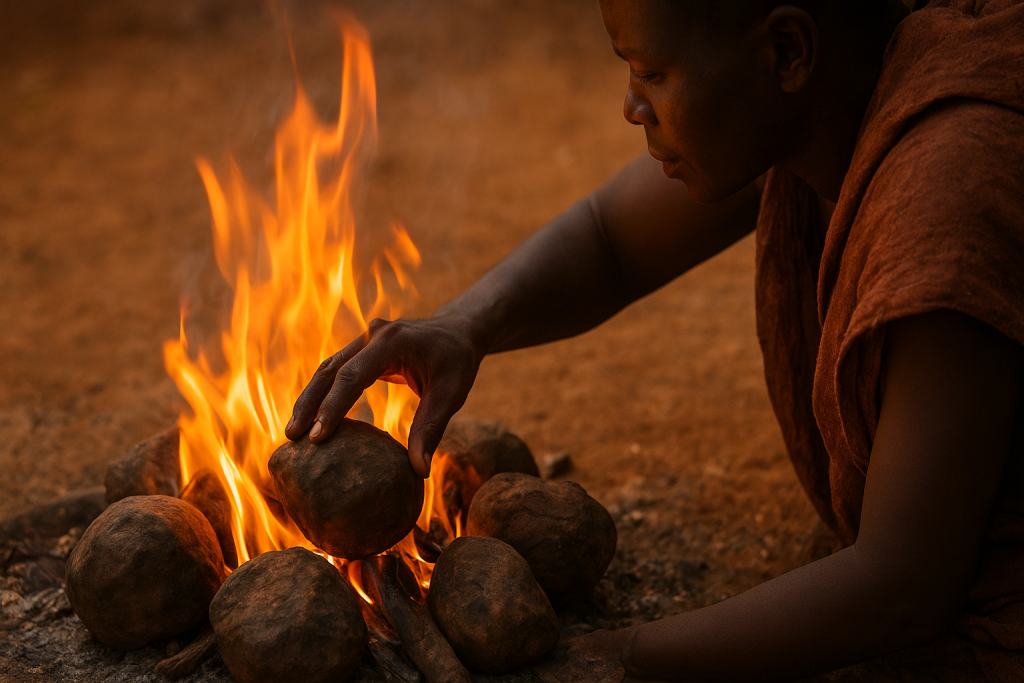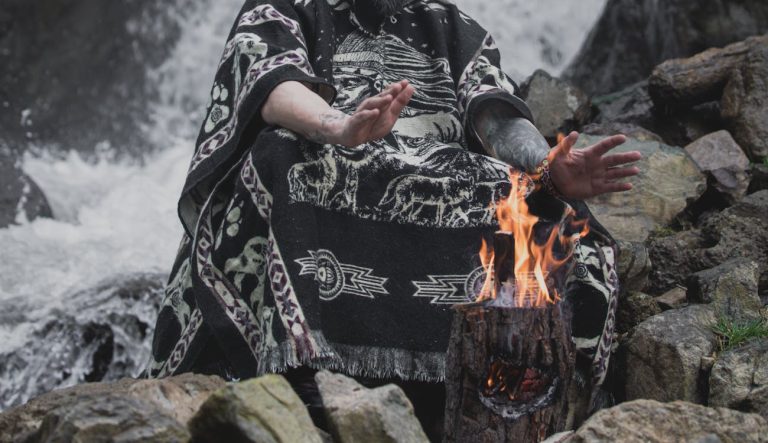
Traditional African heat therapy methods used fire and heated stones to promote wellness and longevity.
Researchers note that these practices were central to cultural and spiritual rituals across diverse African societies.
Traditional steam baths and hot compresses were commonly used to relieve aches, colds, and fatigue.
Experts suggest that such controlled heat exposure contributed to observed longevity among ancestral populations.
Modern science now investigates these techniques to validate therapeutic benefits using current methodologies.
Scientific Validation of Fire Heat Therapy Benefits
Thermotherapy, a modern equivalent of ancestral African heat therapy, is increasingly used in clinical settings.
Infrared saunas replicate the circulatory and metabolic benefits of traditional fire and steam treatments safely for modern patients.
Researchers studying controlled heat exposure report improvements in circulation and reduced inflammation.
Physiotherapists incorporate heat therapy into rehabilitation, referencing modern physiotherapy practices inspired by ancestral methods.
Infrared saunas replicate the circulatory and metabolic benefits of traditional fire and steam treatments.
Medical professionals emphasize using regulated devices to prevent burns and excessive heat exposure.
Heat therapy is also observed to reduce stress hormone levels and promote relaxation in patients.
Clinical trials indicate improved sleep quality among individuals using controlled warmth interventions.
Some wellness centers integrate heat therapy with massage or aromatherapy for holistic treatment.
Scientific journals document positive outcomes when ancestral-inspired techniques are safely adapted for modern use.
Controlled heat therapy is increasingly recognized for its role in enhancing quality of life.
Global Adoption of Traditional Heat Techniques

Countries with cold climates are incorporating heat therapy into public wellness programs.
Saunas in Nordic regions mirror traditional African practices in their use of controlled warmth.
Physiotherapists employ heat packs and infrared devices to replicate ancestral healing methods safely.
Wellness resorts combine steam therapy with relaxation techniques inspired by cultural traditions.
Some clinics study ancient African methodologies to inform innovative therapeutic protocols.
Heat therapy is now recommended as an adjunctive treatment alongside physical rehabilitation.
International interest grows in integrating cultural wisdom with scientific validation in wellness programs.
Researchers emphasize that combining traditional techniques with modern safety standards is essential.
Global adoption demonstrates that natural wellness practices can complement conventional medicine effectively.
Experts encourage ongoing studies to quantify physiological effects of controlled heat exposure on diverse populations.
Traditional Methods and Cultural Significance
In many African societies, heat therapy was considered a primary health intervention before pharmaceuticals.
Healers used heated clay beds, hot stones, and fire to maintain body temperature and treat illnesses.
These methods were often integrated with herbal applications to enhance therapeutic outcomes.
Heat therapy was also linked to spiritual purification and ritualistic practices in ancestral communities.
Cultural historians note that maintaining warmth was associated with resilience and longevity.
Community participation in steam baths or fire-based therapies reinforced social cohesion and wellness education.
Anthropological research indicates that these practices were adaptive strategies to prevent cold-related illnesses.
Controlled warmth was viewed as a form of natural medicine in both daily life and ceremonial contexts.
Documented accounts suggest that regular exposure to heat contributed to robust immune responses in ancestral populations.
Traditional knowledge of heat therapy reflects a sophisticated understanding of physiological and cultural health determinants.
Modern Safety Standards
Health authorities advise against direct exposure to open flames or gas cylinders for warming purposes.
Carbon monoxide and fire hazards present serious risks if traditional methods are replicated unsafely.
Safe alternatives include infrared heaters, ceramic devices, or electric heating pads with controlled temperatures.
Clinics emphasize proper hydration and timed sessions to prevent heat-related complications.
Public health campaigns now stress combining ancestral methods with modern safety protocols.
Researchers caution against excessive or prolonged exposure, which may lead to dehydration or fainting.
Educational programs inform practitioners and the public about safe implementation of heat therapy.
Evidence-based guidelines are emerging for integrating traditional warming practices in contemporary wellness routines.
Global regulatory bodies monitor safety standards to ensure therapeutic practices are risk-free.
Modern adaptations preserve ancestral benefits while minimizing potential health hazards effectively.
Physiological Mechanisms Behind Heat Therapy
Heat exposure causes vasodilation, improving circulation and oxygen delivery to tissues.
Muscle relaxation occurs due to increased blood flow and decreased tissue stiffness.
Studies indicate that heat therapy reduces inflammation by promoting enzymatic activity and metabolic regulation.
Heat also triggers the release of endorphins, providing analgesic and mood-enhancing effects.
Controlled warmth supports immune responses and accelerates tissue repair in minor injuries.
Physiological benefits are most pronounced when heat therapy is applied in short, regulated sessions.
Combination with hydration and mild physical activity enhances therapeutic outcomes.
Research continues to investigate optimal temperatures and exposure times for maximum benefit.
Modern devices allow precise temperature control, replicating ancestral therapy safely and effectively.
Understanding these mechanisms validates the health value of centuries-old practices globally.
Future Directions in Heat Therapy Research
Interest in heat therapy is expanding across medical and wellness research institutions worldwide.
Researchers are studying long-term effects of controlled heat exposure on cardiovascular health.
Innovations include wearable heat therapy devices for targeted muscle and joint treatment.
Integration of cultural knowledge with technological advancement guides modern wellness interventions.
Future studies aim to quantify benefits in stress reduction, sleep improvement, and chronic pain management.
Researchers advocate interdisciplinary collaboration to combine anthropology, medicine, and physiotherapy in studies.
Related: Experts Outline 10 Essential Health Tips to Boost Overall Wellness
Heat therapy is predicted to become a mainstream complement to conventional healthcare globally.
Clinical trials continue to evaluate efficacy across age groups and medical conditions.
Global wellness programs are increasingly incorporating evidence-based heat therapy protocols.
The resurgence of ancestral methods highlights potential for natural, non-pharmaceutical interventions in contemporary medicine.
Written by Emma Sullivan, editing by Greg Mascot, Epicstorian News.

